Forming Technology
The Forming Technology Research Department is contributing to higher added value in JFE products through the development of forming technology for automotive steel sheets and EVI (Early Vender Involvement) activities for automotive structures / parts.
New Forming Technology/Evaluation Technology
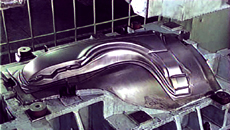
Fender panel in trial using experimental die
The Forming Technology Research Dept. is devoting great effort to the development of new forming technologies such as press motion control, in which a servo press machine is used, and sheet hydro-forming, which makes it possible to apply high strength steel sheets to automobile outer panels, and the trial manufacture of parts using newly-developed steels. This department provides powerful support to the development of steel sheets and forming technologies and evaluation of various kinds of performance in body structure/parts.
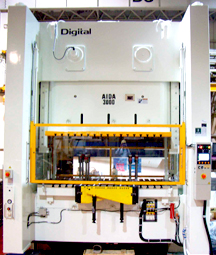
3000kN class servo press machine
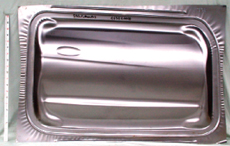
Door panel formed by sheet hydro-forming(590MPa T.S. steel grade)
CAE Analysis Technology
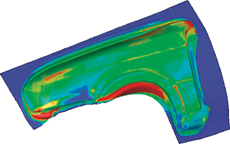
Press-forming analysis of fender panel
High accuracy is required in numerical analysis such as multistage forming from draw to restrike, sheet hydro-forming, and other complicate forming processes. This department supports part development of customers by predicting fault of forming (wrinkle, surface distortion fracture, stretch-flange cracking, springback, etc.).
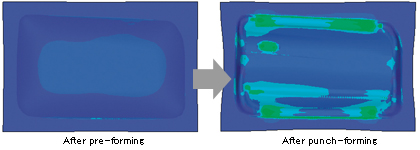
Analysis of door panel using sheet hydro-forming
Analysis of Automobile Body/Part Rigidity and Life
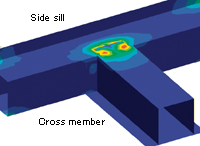
Fatigue life prediction of spot welded structures
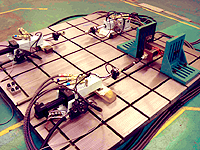
Tri-axial fatigue testing machine
Strength, rigidity and durability of automotive body/parts are evaluated by numerical analyses and experiments. This department contributes to the development of body and parts by proposing suitable materials, shapes, and joining conditions to customers.
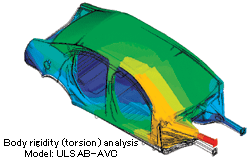
Automobile Body Structural/Functional Evaluation
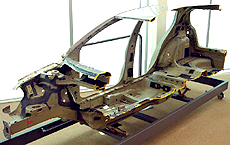
Investigation of body structure
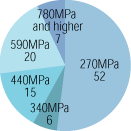
Example of ratio (wt%) of steel materials used in automobile body by strength level
The Forming Technology Research Dept. has created a database of the distinctive features of automobile structures and materials used by disassembled investigations of automobile bodies. This database is actively used as basic data for future material development, and is contributing to proposals of materials, structures, and processes to customers from the viewpoint of automobile body weight reduction and the cost of part functions.
